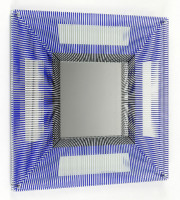Geneviève Claisse
Geneviève Claisse (France, 1935–2018) was a prominent geometric abstract painter. Influenced by her great-uncle, Auguste Herbin, she developed a style characterized by pure forms and vibrant colors. Claisse's work is celebrated for its formal purity and meticulous execution, contributing significantly to the geometric abstraction movement.
- Recently Added
- Price (Low-High)
- Price (High-Low)
- Year (Low-High)
- Year (High-Low)

Artwork by Ellsworth Kelly
What is Hard Edge Art?
Hard Edge art is a style of abstract painting that became popular in the 1960s. It features areas of color separated by crisp, sharp edges that are painted with geometric precision. The term hard-edge painting was coined by art critic Jules Langsner to describe this approach, which contrasts with the softer, more fluid forms of other abstract styles.





















